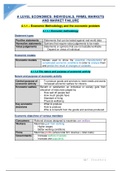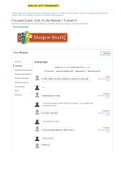Summary
Summary Economics 214 Macroeconomics Chapter 5
- Course
- Economics 214
- Institution
- Stellenbosch University (SUN)
Economics 214 for Stellenbosch university. Chapter 5 of the second terms work - MACROeconomics. *Note that the graphs and tables in these notes are not of my own work, but taken from the slideshow given to us by the lecturer on SUNLearn.
[Show more]












